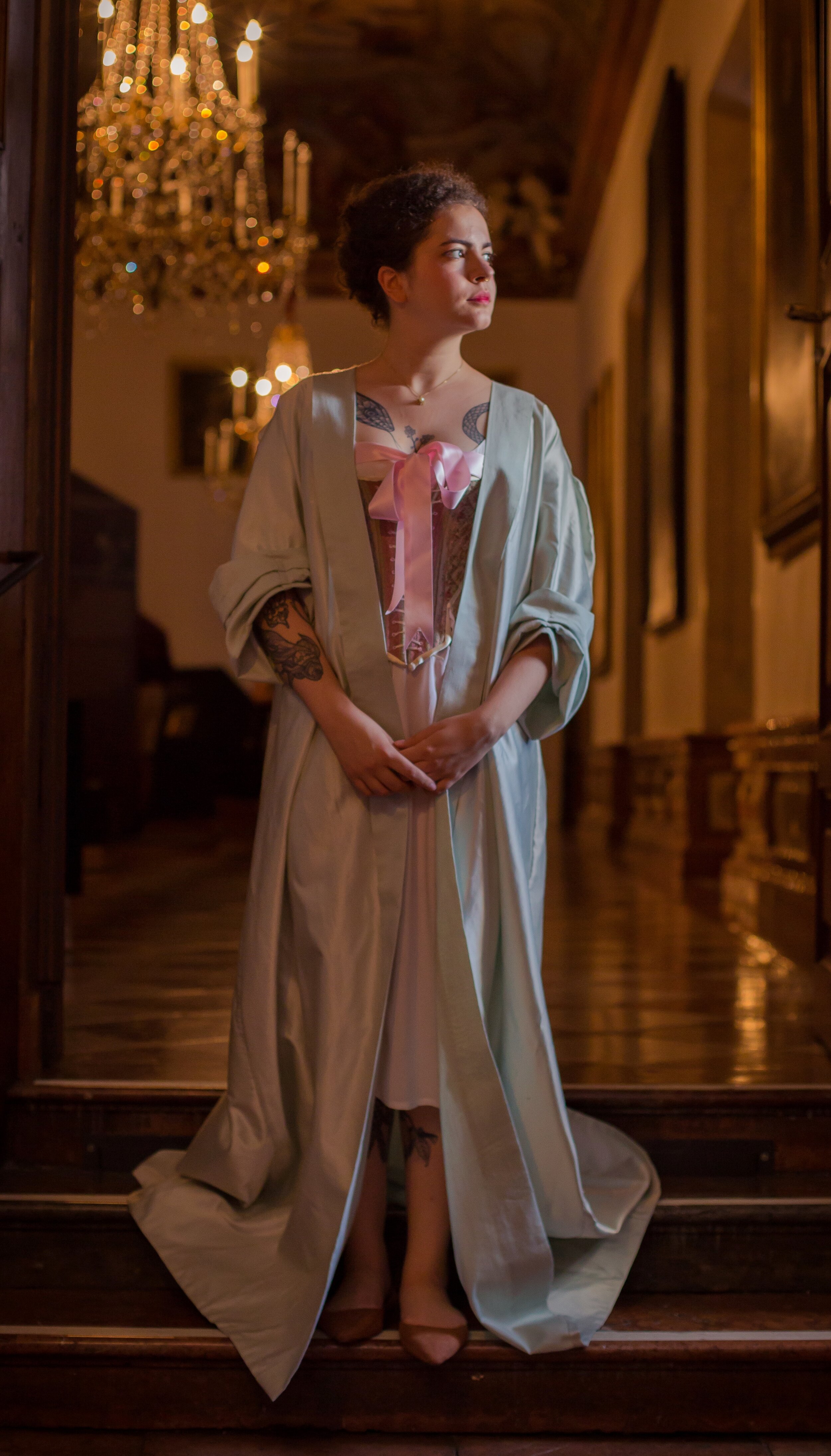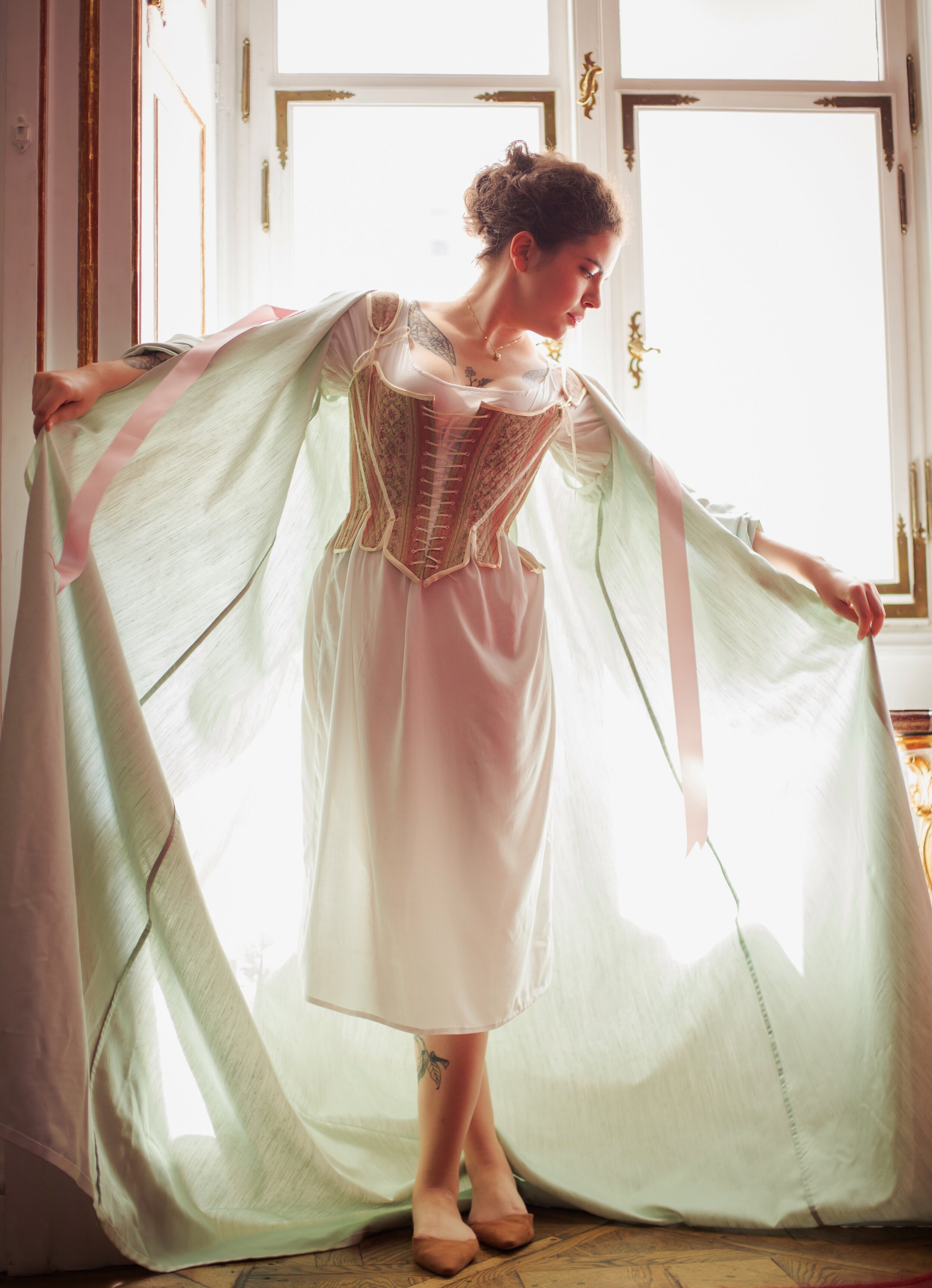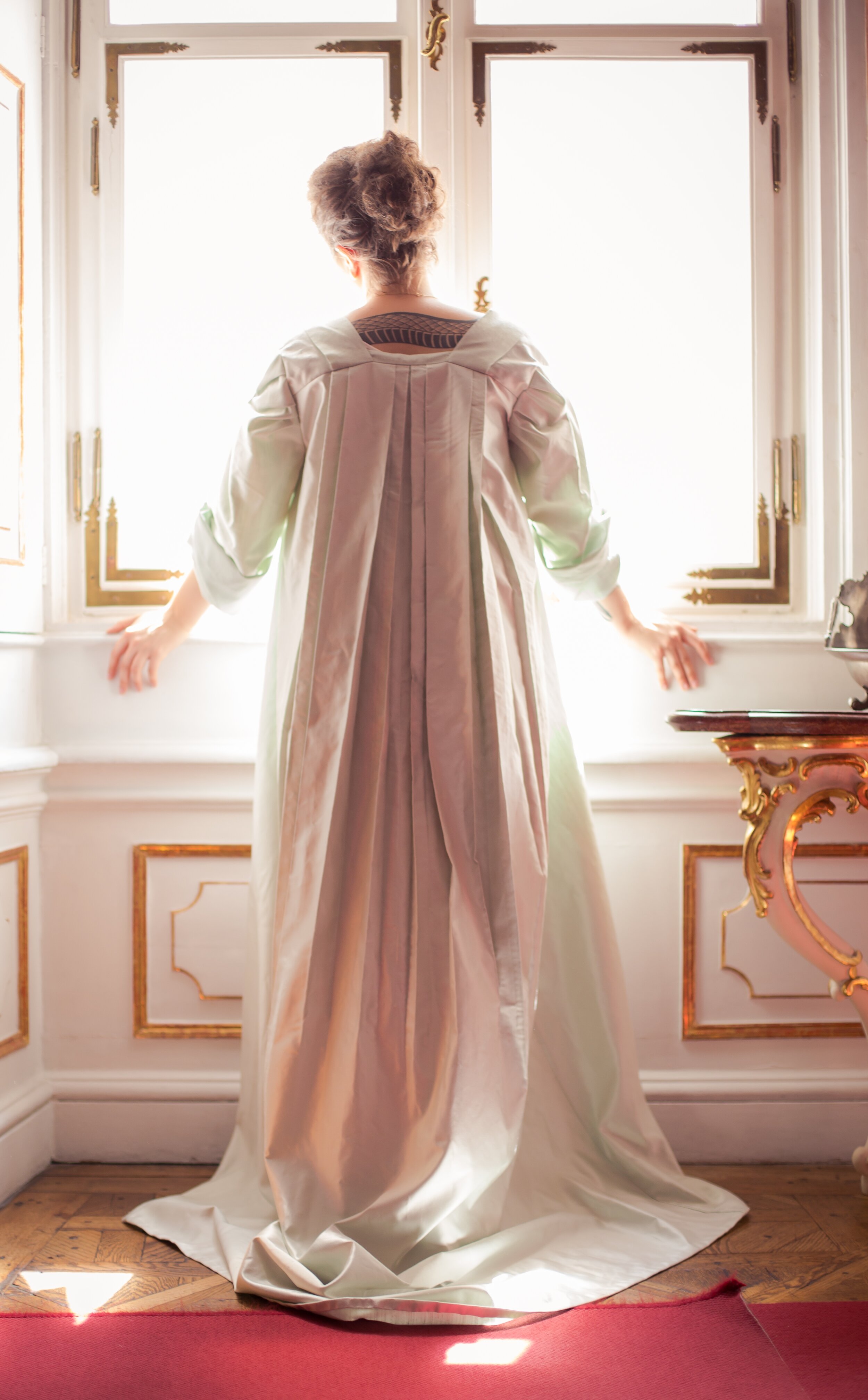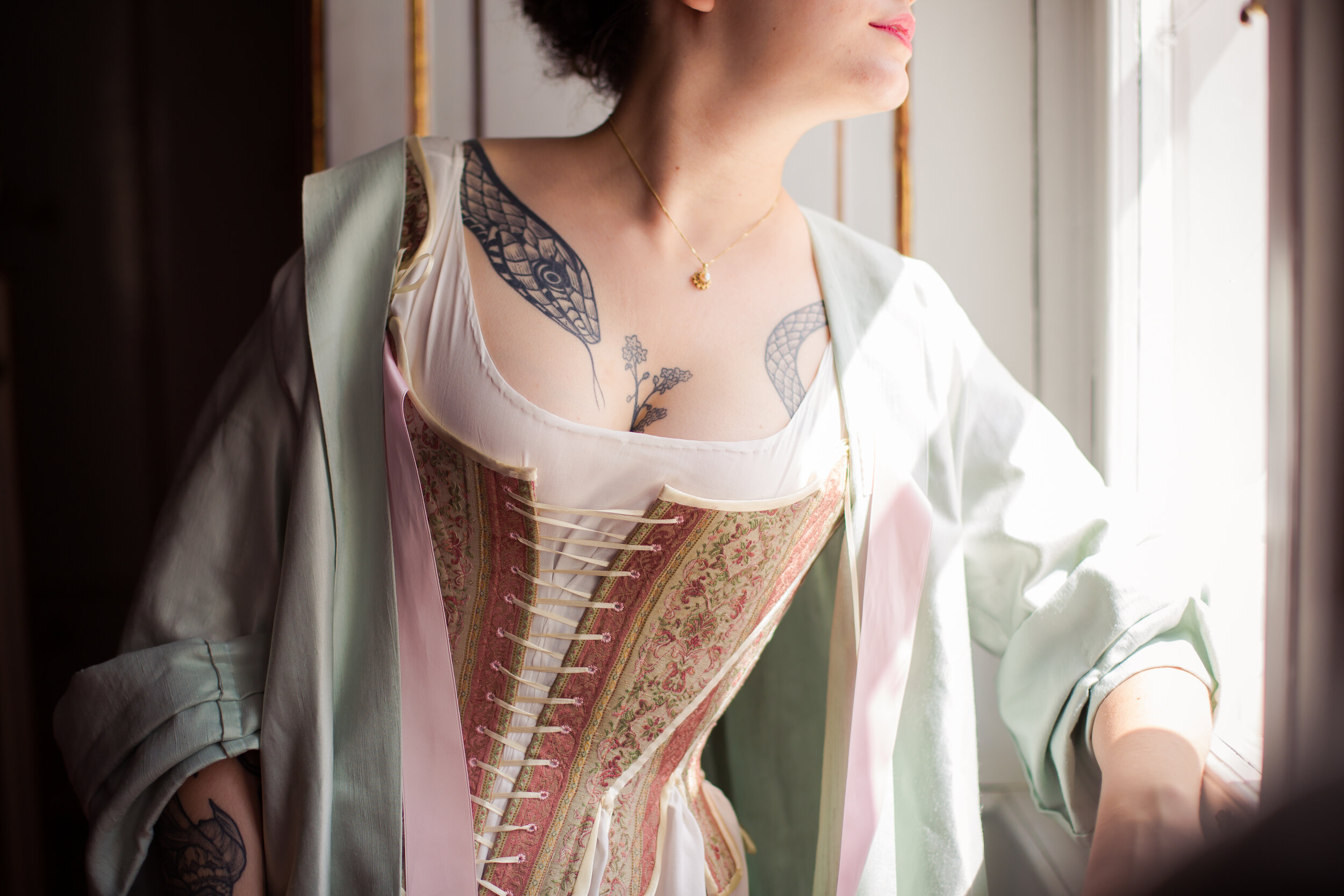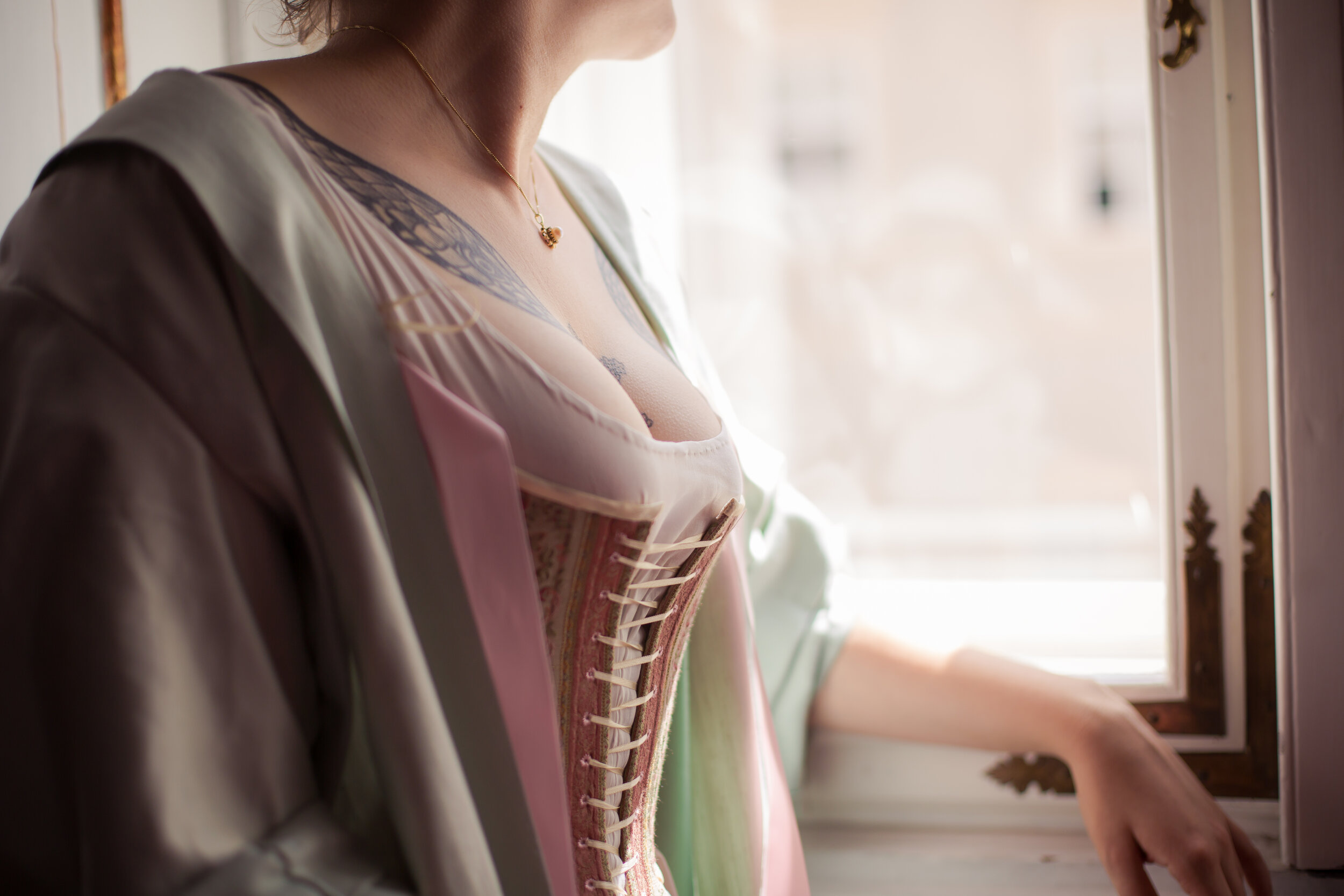18th century loungewear
recreating a rococo chemise, stays and morning gown
Historical fashion has been on my mind for as long as I can remember, but only in the past two years or so I have been thinking about historical underwear. The undergarments determine the silhouette of everything that lies on top and more often than not, subtle shifts in silhouette and proportions let us date a garment more easily than certain colours or trims.
So today, let’s explore the typical undergarments of the mid-18th century: The Rococo era. Rococo was all about lightness, elegance and the natural form - the word itself derives from the French rocaille, a decorative element shaped like acanthus leaves. In architecture and interior decoration, there were gilded carvings and sculpted molding in the shape of vines, seashells, birds, flowers, fruit.. and an abundance of fluid curves, all in light pastels, white and gold.
In fashion, this translated to extravagance and ornamentation. The gowns became increasingly more frivolous and revealing and the Robe á la Francaise was introduced - a low-cut gown with a heavily embellished stomacher, wide panniers, and a loose, pleated back. Those pleats (several symmetrically stacked box- and knife pleats) were later called ‘Watteau’ pleats, after the painter Jean-Antoine Watteau, who always paid minute attention to women’s fashion and depicted various Francaises in his work.
I have always been fascinated by Watteau pleats, but making a whole Robe á la Francaise seemed a bit too intimidating: You need to drape the back over a lining, while the front has to be extremely fitted, ideally without any wrinkles or pulls. It certainly can be done, but you need practice, patience and - the right undergarments. So I made those first and decided to practice my pleating technique on a simple, wide-cut morning gown.
I made the gown by calculating the pleats - and freely draping the rest. I observed what the fabric wanted, how it hung over the dress form: Where did it fold for a collar, where should the sideseams be? It was an extremely intuitive process, where I let myself be guided by my intuition.
Making the stays was a completely different experience to making the gown. It was very precise, the construction had to follow a certain order, and achieving a good fit is crucial. But I think that because of these differences, the two garments work so well together: You have the sharpness of the stays complement the fluidity of the gown, while the stripes echo the pleats in the back. The colours are of course perfect for each other, especially since I decided to go with a pink ribbon instead of a pistachio one to close the gown.
Making this set was nice, but one of the best parts was taking the pictures! A special thanks goes to the Domquartier Salzburg for letting us shoot in the State Rooms of the Residenz: The interior is arguably more baroque, and strangely also more neoclassicistic than rococo (every Archbishop felt the need to fulfill his vision), but very fitting nonetheless.
All images © Lukas Jahn
Photography Assistant: Anicia Jahn
